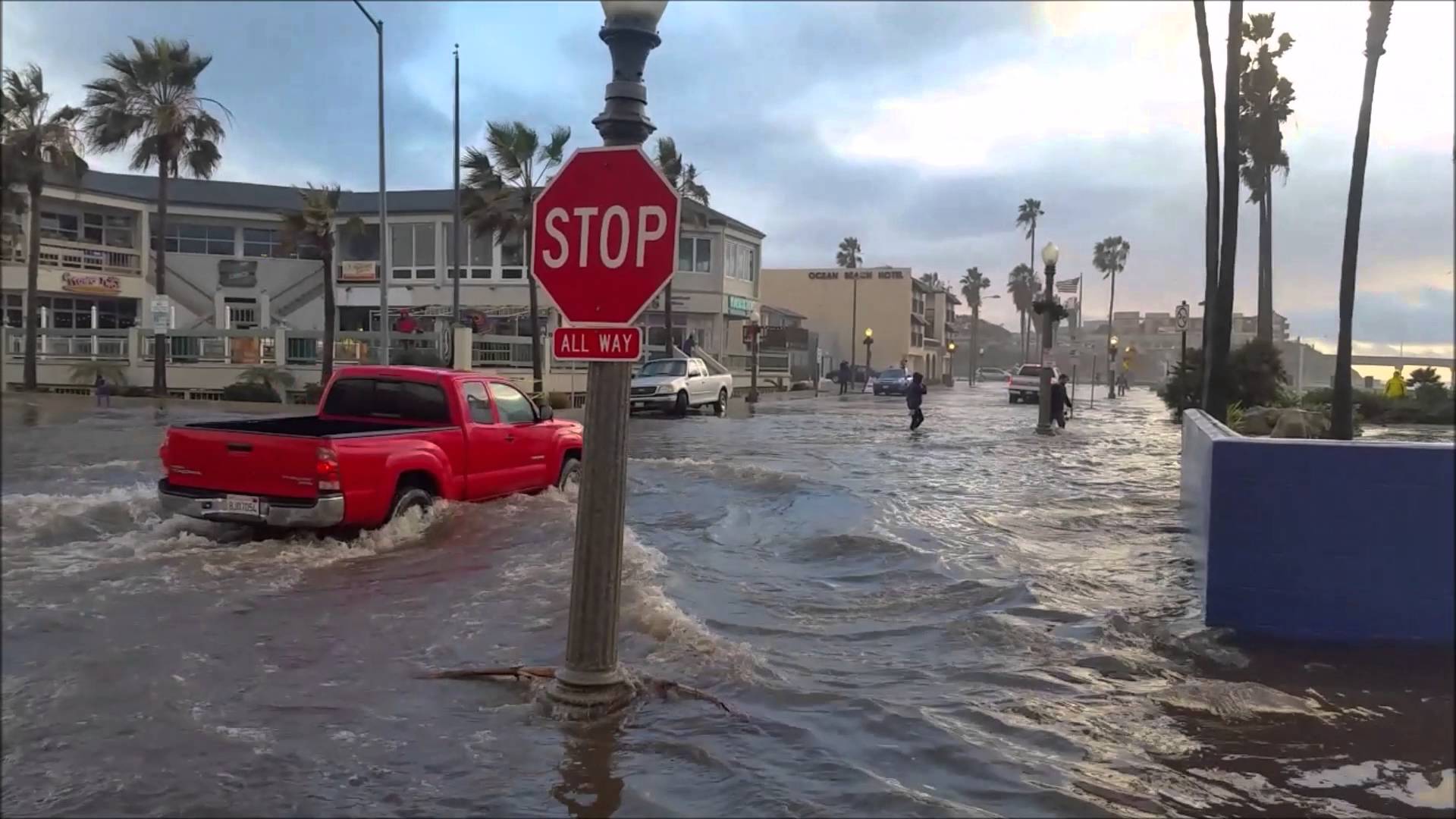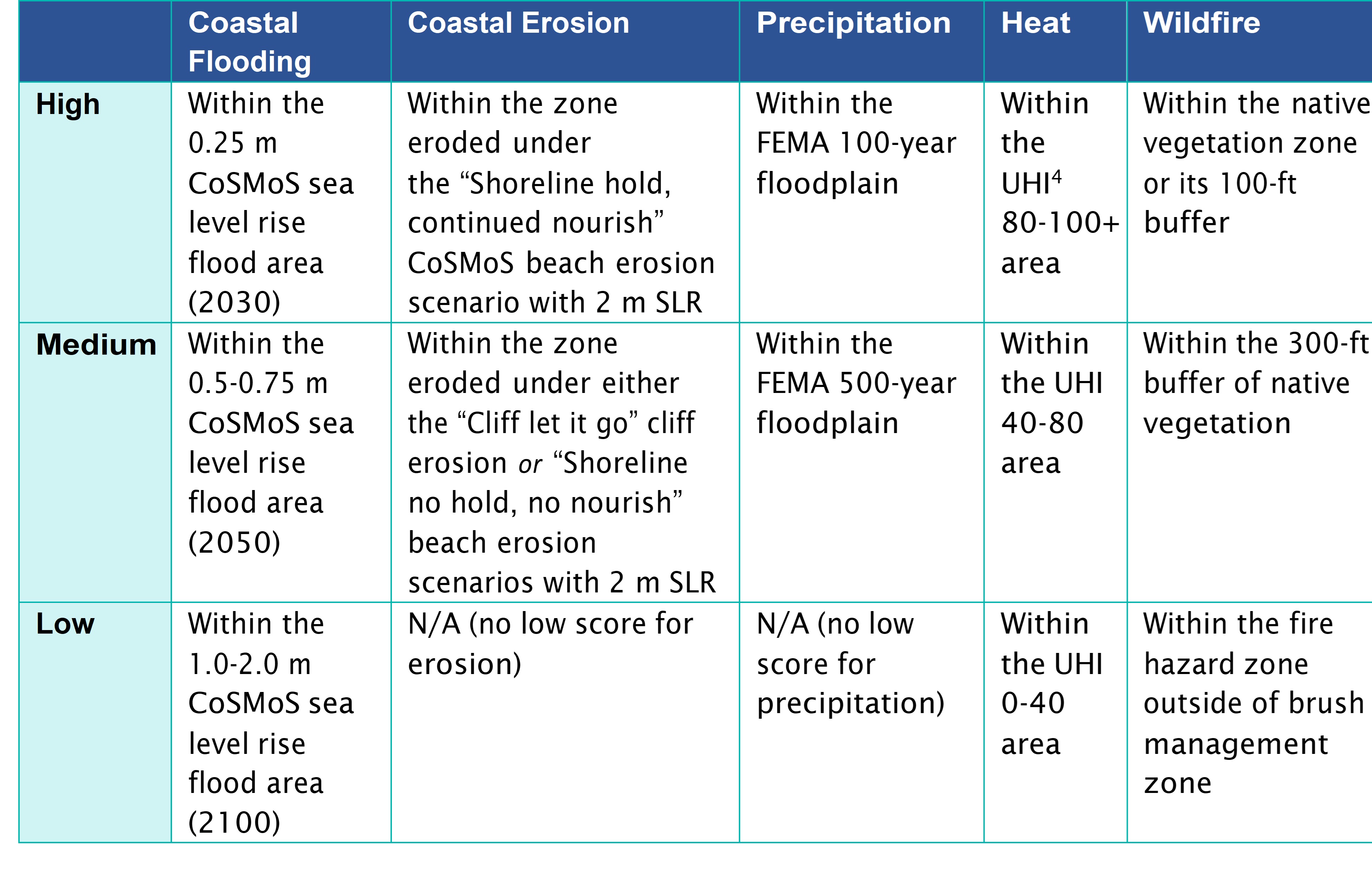Adaptation Strategies to Safeguard San Diego’s Transportation System
SB1 Adaptation Planning Grant: Final Case Study
 |
Brief Summary
The City of San Diego is already experiencing impacts from climate change, and scientists expect current trends to intensify over time. Sea level rise is occurring along the San Diego coast and will lead to more extensive flooding and increased coastal erosion in the years ahead. Inland parts of the City experience periods of extreme heat, which are projected to intensify and become more frequent. To reduce negative impacts on City assets, services, and disadvantaged communities’ access to transportation services, the City is taking proactive steps to understand the risks posed by climate change hazards, identify critical vulnerabilities, and address them to ensure that San Diego remains a thriving and beautiful place to live, work, play, and visit.
Beginning in May 2018, with support from the Caltrans Adaptation Planning Grant, the City completed a climate change vulnerability assessment of the City’s transportation network and other priority assets to historic and projected key climate change hazards and developed a set of initial adaptation strategies. The City also developed and tested a multi-sector method for evaluating those strategies useful beyond the transportation sector and across jurisdictional boundaries.
The main objectives of this project were to:
- Collect and review available information, both historically documented and projected, of climate change exposure and vulnerability for the City of San Diego’s transportation assets;
- Identify and evaluate adaptation strategies for the City’s transportation system to increase resilience to extreme events and other climate-related hazards; and
- Develop and test a systematic and stakeholder-accepted evaluation methodology to assess which strategies are best suited to address the City’s unique vulnerabilities. The methodology should be applicable to other sectors, so that it can be used in the development of the City’s adaptation plan, and so that it will also be applicable to other local transportation networks in the region and across the State.
Completion of this work effort in February 2020 was a key first step in development of Climate Resilient SD, the City’s comprehensive climate adaptation plan. This project also supports numerous state initiatives including: the California Transportation Plan 2040, Safeguarding California Plan, the California Coastal Commission Sea Level Rise Policy Guidance, and the California Adaptation Planning Guide.
 |
Lead Agency and Partnerships
The City of San Diego was the lead agency for this project. The City also assembled a Stakeholder Advisory Group of technical experts and representatives from regional climate and hazard planning who could provide feedback and input to the vulnerability assessment process and support robust regional coordination.
Drivers
Completion of the Climate Change Vulnerability Assessment supports meeting the legislative requirements of SB 379 and was funded in part by the SB1 Caltrans Adaptation Planning Grant Program.
Engagement Process
The City of San Diego assembled a Stakeholder Advisory Group of experts who could provide feedback and input to the vulnerability assessment process and support robust regional coordination. In selecting participants for the Stakeholder Advisory Group, the City included transportation agency and group representatives, in addition to representatives from each of the four sectors analyzed in the vulnerability assessment (public safety, water, transportation, and open space and environment). The Stakeholder Advisory Group also included representatives for regional climate and hazard planning, such as the City Office of Homeland Security and County Office of Emergency Services, as well as local community-based organizations to include representatives from communities that may be most vulnerable to climate change impacts.
 |
Climate Impact Area
The City of San Diego’s transportation infrastructure is subject to multiple climate change hazards: wildfire, extreme heat, precipitation-driven flooding, and sea level rise, including coastal erosion and coastal flooding. This study 1) assessed vulnerability of the assets based on exposure, sensitivity, and adaptive capacity and 2) considered potential consequences should the assets be impacted. Potential adaptation strategies were developed to increase resilience of vulnerable assets.
Funding Source
The project was funded through award of Fiscal Year 2017/2018 Caltrans Adaptation Planning Grant funds ($438,620) and included an additional $59,000 local match from the City of San Diego.
Research and Data
The City utilized the following guidance documents to guide the vulnerability assessment methodology and approach:
- California Adaptation Planning Guide
- Safeguarding California
- California Coastal Commission Sea Level Rise Policy Guidance
- Ocean Protection Council State of California Sea Level Rise Guidance
To analyze the extent and severity of climate change impacts, the City used best available science, including California’s Fourth Climate Assessment (2018), Cal-Adapt, CalEPA Urban Heat Index, FEMA flood maps, and internal City data sources for past exposure. Sea level rise exposure was modeled using the USGS’s Coastal Storm Modeling System (CoSMoS).
 |
Challenges
One of main challenges in the completion of the vulnerability assessment was the time and resources needed to complete thorough consultations and coordination both internally across City departments as well as externally with stakeholders and community members. The Stakeholder Advisory Group was crucial in providing a platform and space for stakeholder discussion with City staff.
Funding will be a primary challenge for implementation of identified solutions. Resources and time will need to be allocated toward continued coordination with internal and external stakeholders.
Outcomes
In the climate change vulnerability assessment, the City analyzed the climate vulnerability of all its critical assets and developed a comprehensive citywide vulnerability assessment report.
The findings of this vulnerability assessment will inform the City’s climate adaptation plan, Climate Resilient SD. Through this evaluation methodology, the City was able to develop a list of highly rated adaptation strategies. This suite of adaptation strategies was built upon and refined during the development of Climate Resilient SD.
Replicability
The development of the stakeholder advisory group, vulnerability analysis methodology, and development of adaptation strategies is applicable and replicable for climate adaptation planning across various sectors and for multiple climate change hazards.
Additional Resources
More information about this project and other local resources are available on the City of San Diego’s Resilience webpage: https://www.sandiego.gov/sustainability/resilience
Further Information


